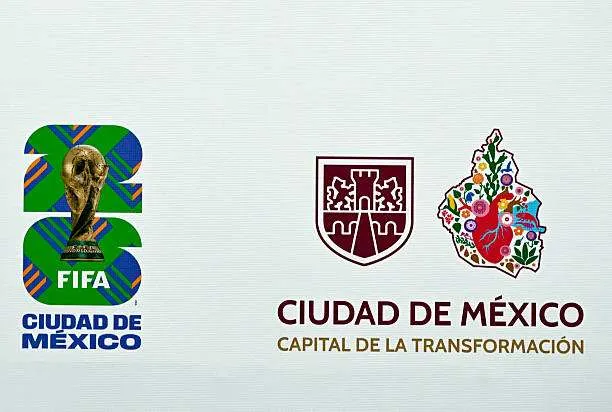Mexico City gears up for 2026 FIFA World Cup opener with sweeping upgrades
Renovated Azteca Stadium and increased security measures aim to ensure a smooth World Cup in Mexico.
By Widya Putri and Randy Ahmad
Mexico City is preparing to welcome more than five million visitors for the 2026 FIFA World Cup, with the global football tournament’s opening match scheduled to be held in the capital. The announcement was made by Mexican authorities on Wednesday, as planning intensifies for one of the most anticipated sporting events in the world.
The 2026 FIFA World Cup will make history as the first edition to be jointly hosted by three countries — Mexico, the United States, and Canada. Sixteen cities will serve as host venues, including three in Mexico: the capital Mexico City, the western city of Guadalajara, and Monterrey in the north. Eleven of the host stadiums are located in the United States, while Canada will contribute two venues.
As the primary host city for the tournament’s inaugural match, Mexico City is projected to attract more than five million visitors, nearly half its current population of around nine million. The city sits over 2,200 meters (approximately 7,200 feet) above sea level, a factor that often plays a significant role in international football due to the thinner air.
Azteca Stadium to be renovated ahead of World Cup
Central to Mexico City's preparations is the renovation of the iconic Azteca Stadium, one of the most storied football arenas in the world. The stadium famously hosted the World Cup finals in 1970 and 1986 and will now become the first venue to hold matches in three different World Cups.
According to Felix Aguirre, general director of the stadium, more than $100 million is being invested in upgrades to ensure the venue is ready by June 11, 2026, the scheduled date for the opening match. The stadium will undergo extensive improvements to enhance accessibility, security, and the fan experience.
However, the renovations have not been without controversy. The stadium was renamed in connection with a major bank financing the renovation, which drew criticism from fans and traditionalists. Due to FIFA's strict branding rules, the venue will be officially referred to as Mexico City Stadium during the tournament.
Enhanced security and surveillance across Mexico City
Mexico’s capital is no stranger to major international events, but the scale of the World Cup has prompted a significant increase in public security measures. Interior Minister Rosa Icela Rodriguez emphasized that national and city-level authorities are collaborating closely to provide a safe and seamless experience for visitors.
One of the most ambitious measures includes a dramatic expansion of the city’s surveillance network. Mexico City Mayor Clara Brugada announced that 40,000 new security cameras will be installed, bringing the total across the metropolis to 123,000.
"We will be the most video-surveilled city in all of the Americas," Brugada said, adding that the increased monitoring will support both security and emergency response operations during the tournament.
Promoting an inclusive and respectful World Cup atmosphere
As part of its World Cup readiness efforts, Mexico is also working with FIFA to promote a tournament free from hate speech, discrimination, and violence. FIFA has consistently penalized Mexico in recent years due to homophobic chanting by some fans during matches.
Organizers stressed the importance of maintaining an environment that is welcoming to everyone, including taking steps to prevent racism, homophobia, and other violations of civil liberties. These goals align with FIFA’s broader campaign to make the World Cup a global festival that celebrates diversity and mutual respect.
World Cup to provide lasting impact on Mexico’s infrastructure
While much of the current focus is on readiness for the 2026 FIFA World Cup in Mexico City, officials believe the tournament will also deliver long-term benefits. Investments in transport, digital infrastructure, and urban planning are expected to leave a lasting legacy on the capital and the other host cities.
Public transport systems are being upgraded, including expansions to metro and bus lines that will make it easier for fans to navigate the city during the tournament. In addition, tourism initiatives are being launched to promote lesser-known cultural and historical sites around Mexico City, with the aim of extending visitor stays and boosting the local economy.
Mexico's third time hosting a FIFA World Cup
Mexico has the distinction of being the only country to host the men’s FIFA World Cup three times. After the 1970 and 1986 editions, this third opportunity positions Mexico as a cornerstone of football history.
The decision to open the 2026 tournament in Mexico City reflects the city’s deep connection to the sport and its ability to host world-class events. In both previous editions, the Azteca Stadium was at the heart of unforgettable moments — from Pelé’s third World Cup title to Diego Maradona’s legendary “Hand of God” goal.
As anticipation builds, Mexican officials are doubling down on efforts to ensure Mexico City 2026 FIFA World Cup not only meets global expectations but redefines them.
“We want this to be more than just a football tournament,” said one city official involved in the planning. “We want the world to see what Mexico is capable of — in sports, in hospitality, in innovation.”
Next steps in Mexico City’s World Cup plan
With two years remaining until the tournament kicks off, authorities will continue to finalize preparations. From the ongoing renovation of Mexico City Stadium to training new staff for hospitality and security roles, the city is preparing to host the world.
Mexico City 2026 FIFA World Cup — will remain central not only to headlines and marketing materials but also to the lived experience of fans who descend on the capital in 2026.
If current plans stay on track, Mexico City may once again find itself in the global spotlight — not just as a football city, but as an enduring symbol of resilience, passion, and international cooperation.

